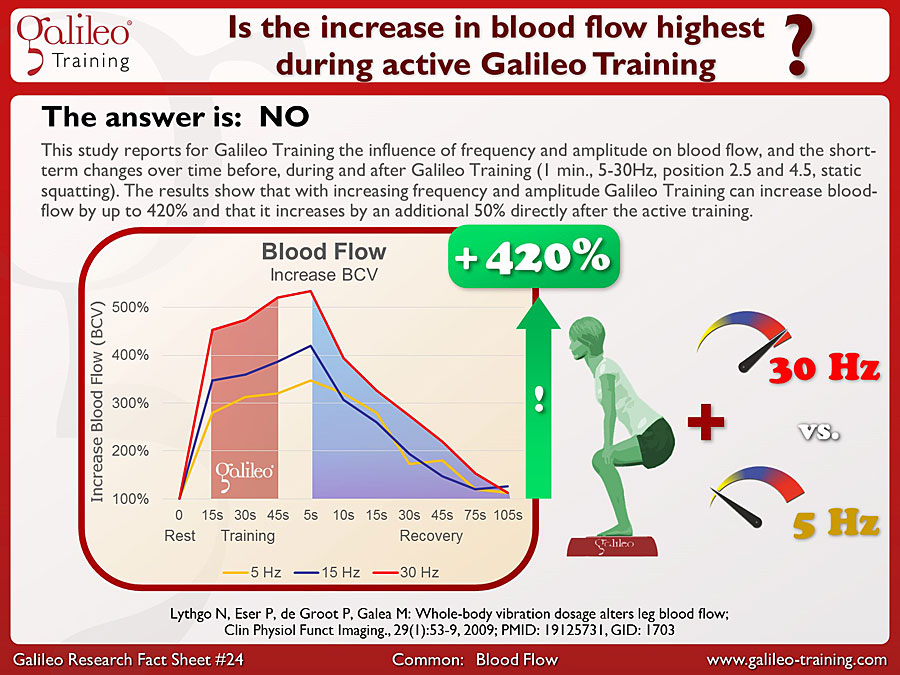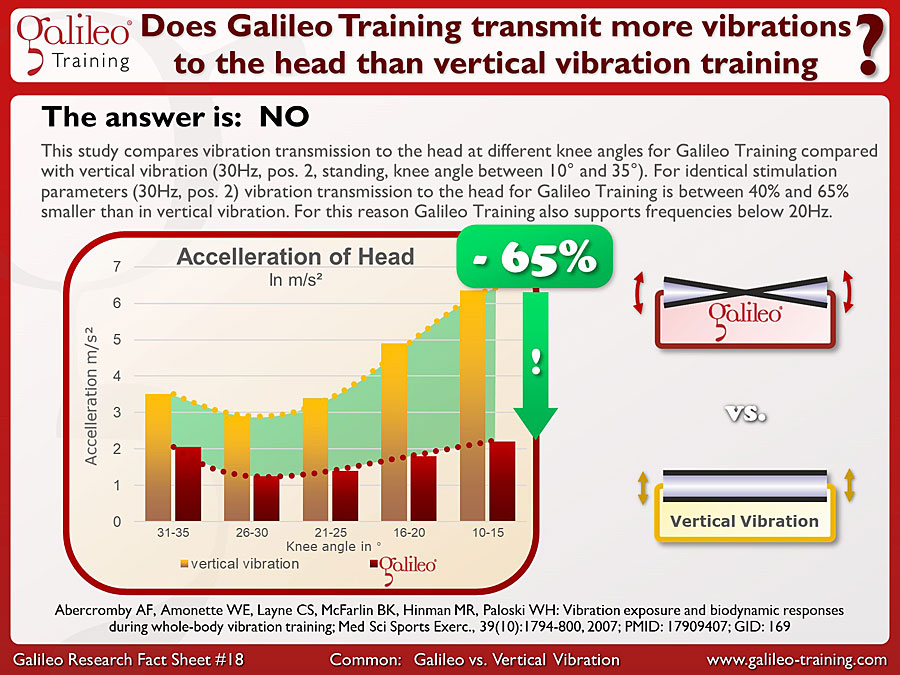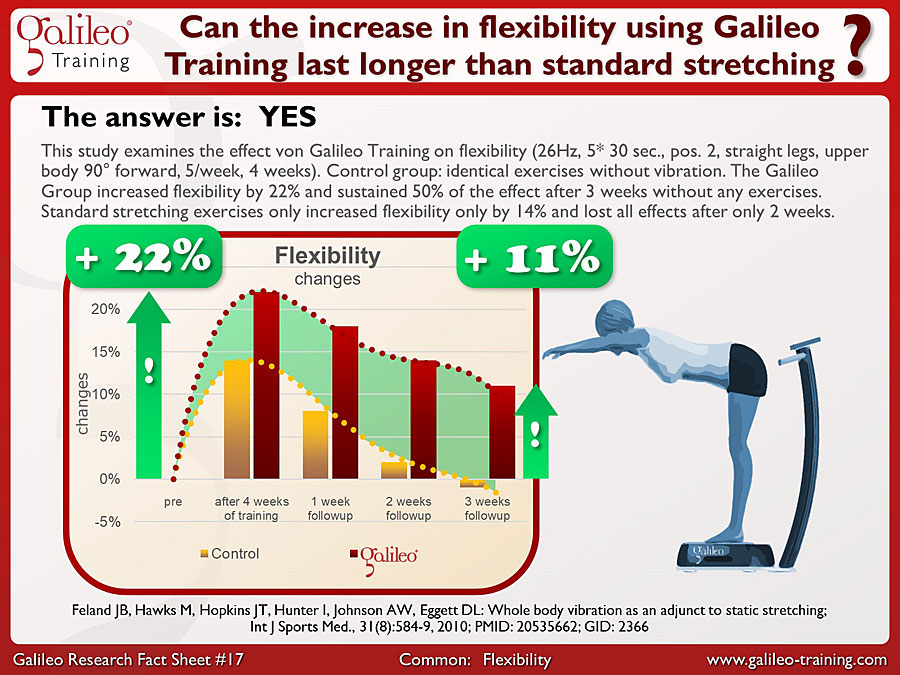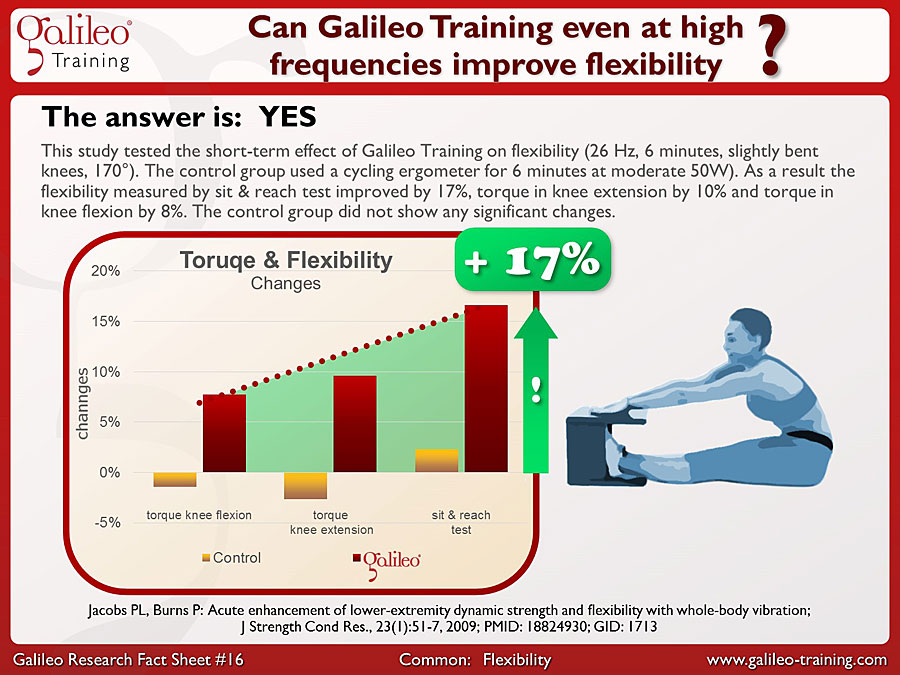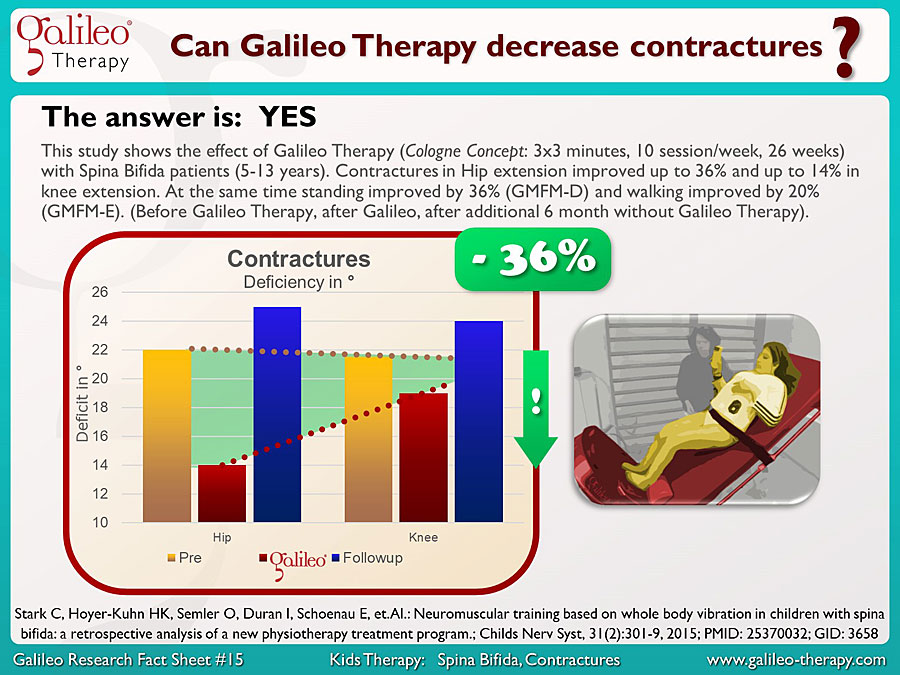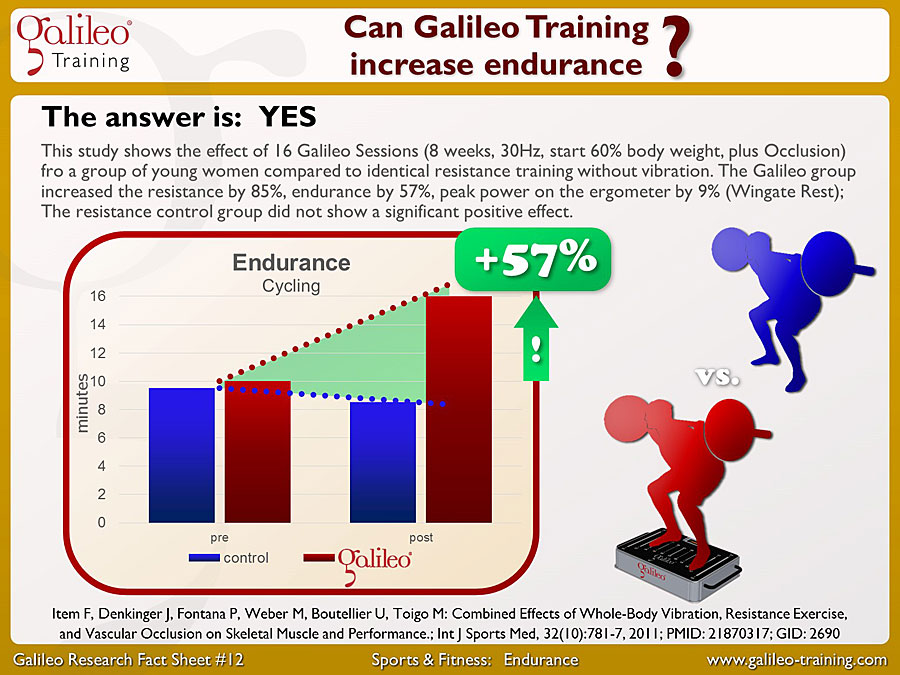Tag Archives: MechanoStimulation
This study tested the influence of frequency and extra loading during Galileo Training on the oxygen uptake (1 min., 18Hz and 34Hz, position 2.5, active standing at 170°, extra loading 40% of lean body mass). The results show that with increasing frequency and increasing extra loading Galileo Training can increase oxygen uptake by up to 260%.
Galileo Research Facts No. 21: Does blood-flow during Galileo Training increase with frequency and Amplitude?
This study reports the influence of frequency and amplitude during Galileo Training on the blood-flow (1 min., 5-30Hz, position 2.5 and 4.5, static squatting). The results show that with increasing frequency and increasing amplitude blood-flow velocity during Galileo Training can be increased by 220% to 420%.
Galileo Research Facts No. 20: Can Galileo Training increase blood flow?
This study reports the immediate effect of Galileo Training on blood flow (26Hz, Pos. 2, 3 minutes, slow squatting, additional weights +35% to +40% of body mass). Control group: Cycling ergometer, 3 min., 50W. In the Galileo Training group blood flow at the foot and calf increase between 120% and 150%. At the same time the cardiovascular reaction is significantly smaller than in cycling ergometer training. ..
Galileo Research Facts No. 24: Is the increase in blood flow highest during active Galileo Training?
This study reports for Galileo Training the influence of frequency and amplitude on blood flow, and the short-term changes over time before, during and after Galileo Training (1 min., 5-30Hz, position 2.5 and 4.5, static squatting). The results show that with increasing frequency and amplitude Galileo Training can increase blood-flow by up to 420% and that it increases by an additional 50% directly after the active training...
Galileo Research Facts No. 18: Does Galileo Training transmit more vibrations to the head than vertical vibration training?
This study compares vibration transmission to the head at different knee angles for Galileo Training compared with vertical vibration (30Hz, pos. 2, standing, knee angle between 10° and 35°). For identical stimulation parameters (30Hz, pos. 2) vibration transmission to the head for Galileo Training is between 40% and 65% smaller than in vertical vibration. For this reason Galileo Training also supports frequencies below 20Hz...
Galileo Research Facts No. 17: Can the increase in flexibility using Galileo Training last longer than standard stretching?
This study examines the effect von Galileo Training on flexibility (26Hz, 5* 30 sec., pos. 2, straight legs, upper body 90° forward, 5/week, 4 weeks). Control group: identical exercises without vibration. The Galileo Group increased flexibility by 22% and sustained 50% of the effect after 3 weeks without any exercises. Standard stretching exercises only increased flexibility only by 14% and lost all effects after only 2 weeks...
Galileo Research Facts No. 16: Can Galileo Training even at high frequencies improve flexibility?
This study tested the short-term effect of Galileo Training on flexibility (26 Hz, 6 minutes, slightly bent knees, 170°). The control group used a cycling ergometer for 6 minutes at moderate 50W). As a result the flexibility measured by sit & reach test improved by 17%, torque in knee extension by 10% and torque in knee flexion by 8%. The control group did not show any significant changes...
Galileo Research Facts No. 15: Can Galileo Training decrease contractures?
This study shows the effect of Galileo Therapy (Cologne Concept: 3x3 minutes, 10 session/week, 26 weeks) with Spina Bifida patients (5-13 years). Contractures in Hip extension improved up to 36% and up to 14% in knee extension. At the same time standing improved by 36% (GMFM-D) and walking improved by 20% (GMFM-E). (Before Galileo Therapy, after Galileo, after additional 6 month without Galileo Therapy)...
Galileo Research Facts No. 12: Can Galileo Training increase endurance?
This study shows the effect of 16 Galileo Sessions (8 weeks, 30Hz, start 60% body weight, plus Occlusion) fro a group of young women compared to identical resistance training without vibration. The Galileo group increased the resistance by 85%, endurance by 57%, peak power on the ergometer by 9% (Wingate Rest); The resistance control group did not show a significant positive effect...
Galileo Research Facts No. 11: Can endurance athletes also gain with Galileo Training?
This study shows the effect of 16 Galileo Sessions (8 weeks, 30Hz, start 70% 1RM, plus Occlusion) for cyclists and Triathletes compared to identical resistance training. The Galileo Group increased muscle mass at the thigh by 3%, type 1 fiber cross-section by 25%, type 2 fiber cross-section by 23%, capillarization by 8% with no significant effect in the resistance training control group...


